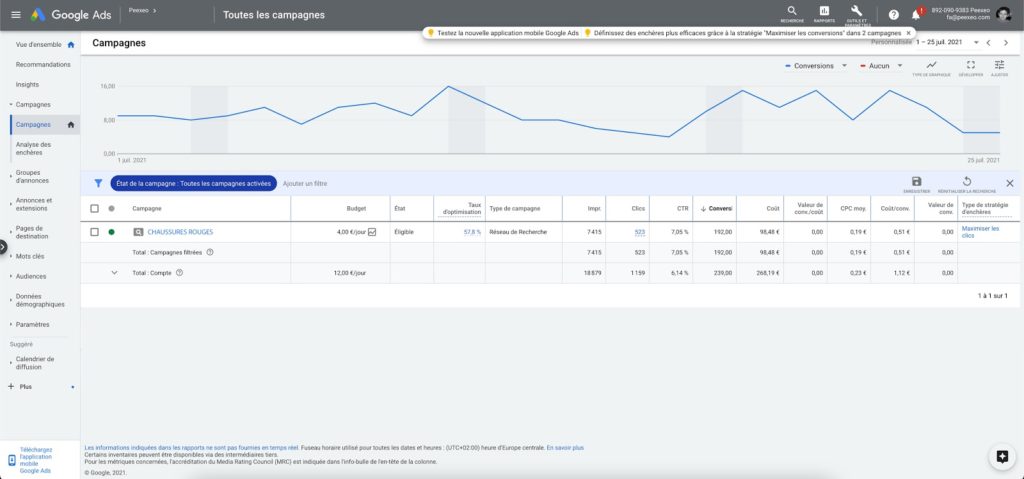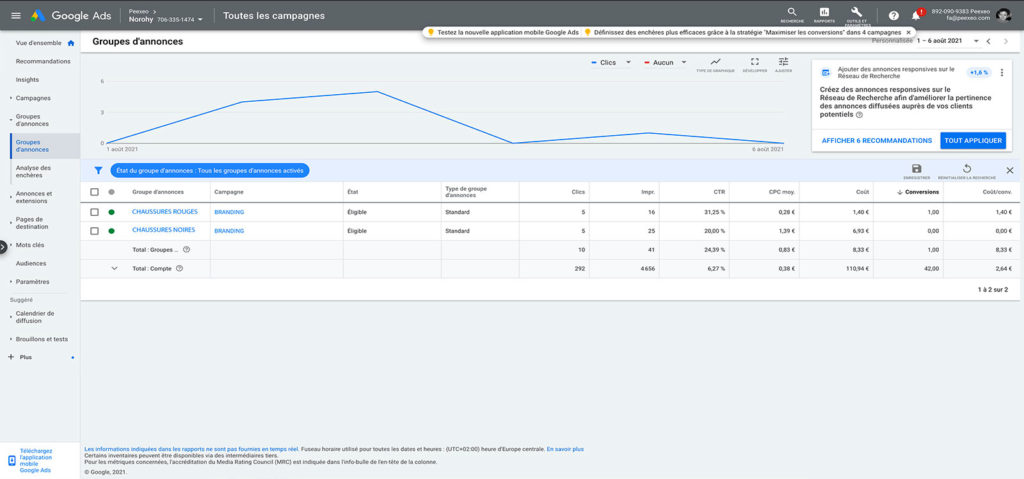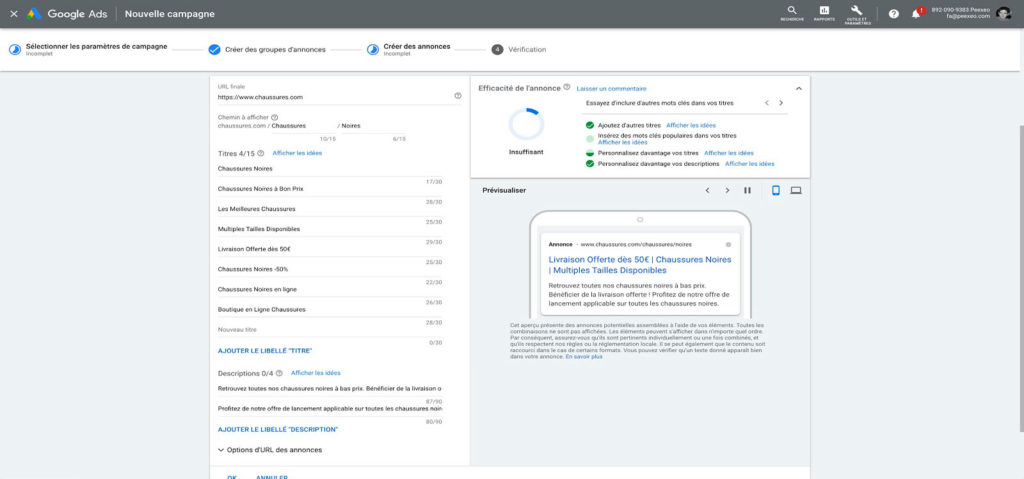Published on 23 September 2021 (Updated 29 February 2024)
75% of Internet users have never scrolled down the first page in search results in 2020.
Therefore, being at the top of Google rankings has become necessary for businesses. However, reaching position 0 organically on the Search Engine Result Page (SERP) is no easy task. That is why many companies turn to the fastest solution: Google Ads.
What is Google Ads?
Google Ads is a platform for creating and displaying online ads to promote your business, improve sales of products and services, build brand awareness, and drive traffic to your website.
How does Google ads work?
Initially, your advertising campaigns will depend on your marketing strategy.
For example, You are a shoe salesman, and you realize that black shoes sell better than red ones. The problem is that you want to sell as many red shoes as black. Therefore, you decide to start using Google Ads to improve your sales.
Once you have launched your Google account and finished setting it up, you can now start by creating a campaign to sell your red shoes.

After creating and setting up your first Google Ads campaign by selecting:
- The right objective (sales, traffic, prospects…),
- The type of campaign (search, display, shopping, video…)
- The language
- The target countries
- Budget
- The bidding strategy (conversions, clicks…)
It is time to move on to the second stage of the creation process: the ad groups.
As the name suggests, these are groups where one or more ads with similar targets should be placed. Using ad groups to classify your ads according to a common theme is essential.
Here in our example, we are selling red shoes, but let’s go a little further. Let’s imagine that selling red shoes on Google Ads is a huge success, and we end up selling more red shoes than black ones.
We are therefore deciding to put black shoes on Google Ads as well. At this point, it would be interesting to separate them into two different ad groups, mainly based on their color.

One of the most essential elements when creating an ad group is the keywords. These are words or phrases of your choice describing your product or service that help determine when and where your ad is likely to be shown.
These keywords can have three different matches: exact, phrase, or broad.
- In “exact match”, the ads are displayed when users type the exact chosen keyword. (e.g. “Black shoes”)
- “Phrase match”, in its turn, allows ads to be displayed when searches include the keyword in a broader sense. (e.g. “black basketball shoes”)
- Finally, “broad match” allows ads to be displayed when searches are related to the keyword. (e.g. “Black patent loafers”)
It is therefore important to pay close attention to your list of keywords, as well as the associated matches.
The last step is the creation of the ads. A large-format text ad is composed of different elements: 3 titles of 30 characters maximum, as well as two descriptions of 90 characters. A responsive ad, on the other hand, has up to 15 titles and 4 descriptions. It adapts itself in order to display the most relevant text and message to Internet users.

When to use Google Ads and SEA strategy?
To put it simply, SEO (Search Engine Optimization) is still the ideal long-term solution because it is 100% free. However, if you don’t have time to improve your brand visibility, Google Ads is the key to all your problems. Indeed, thanks to the cost per click (CPC), you can choose to only spend money when your ad is clicked and can be sure to get results.
And of course, it is also possible to improve brand visibility through social media, especially via Facebook Ads.
ARE YOU INTERESTED OR DO YOU HAVE QUESTIONS?
Do you want someone to help you with Google Ads or other social networks? Do not hesitate to contact our team, we will be happy to answer your questions.





